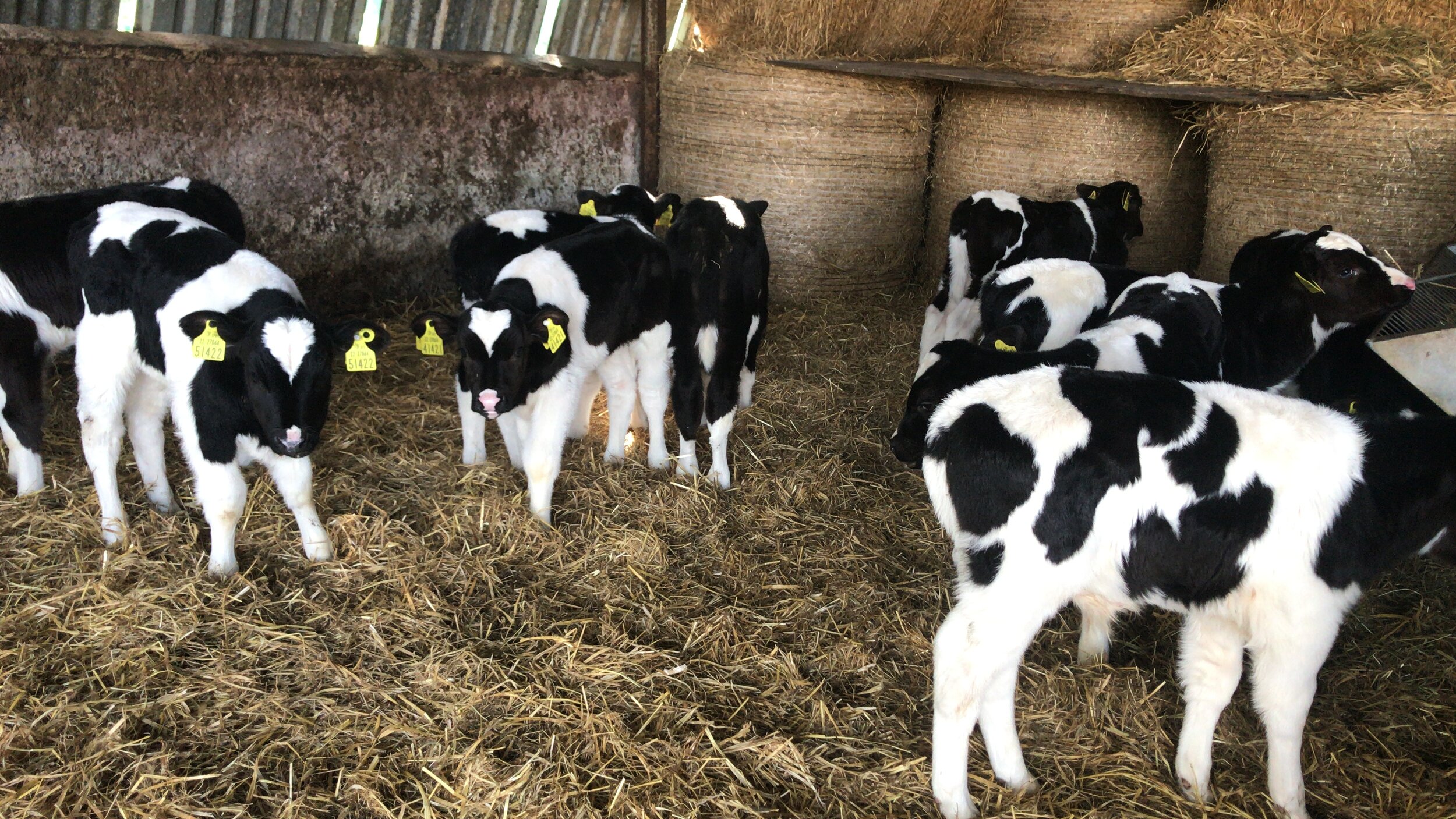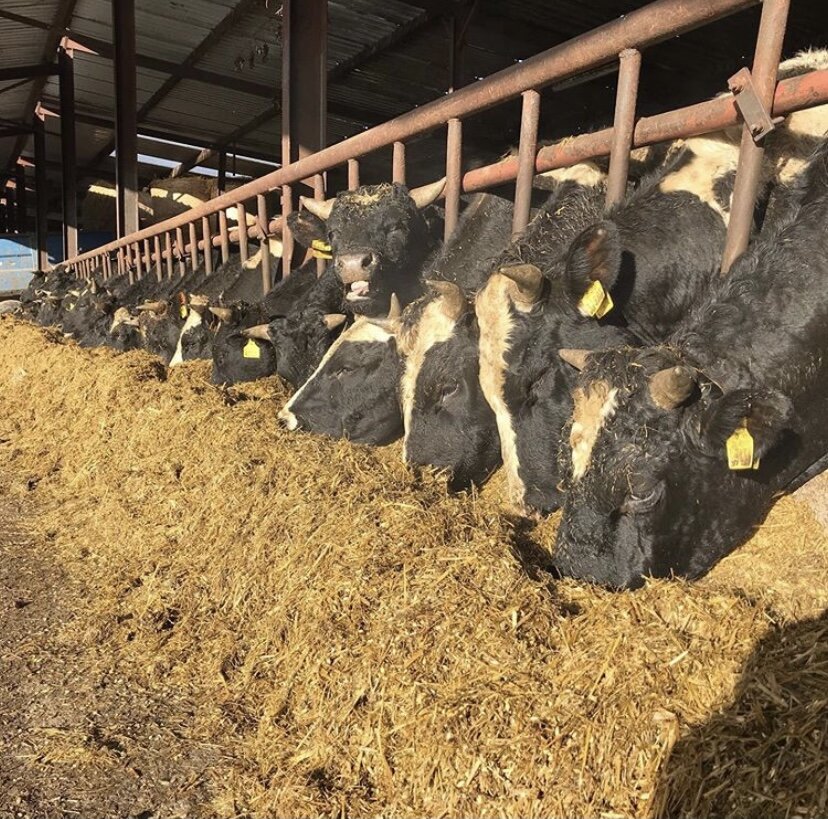
Our Calf to Beef Story…
Sourcing our Calves…
All of our Calves on the farm are sourced from local Dairy Farms that provide the highest welfare standards for their bull calves. We buy a variety of breeds from your traditional Hereford and Angus to Limousin and Belgian Blues with the majority being Friesian and Jersey cross.
Rearing…
Calves on arrival are let into a training pen for our automatic calf feeder, this is to get them used to being able to feed themselves whenever they like. They are then vaccinated and mixed with the rest of the trained calves in the shed. They stay on milk for approximately 64 days, however this is different for each calf depending on their condition. Calves have direct access to a paddock from the shed, allowing them to graze grass pre-weaning and they get their first taste of meal.
Out to grass…
Once our calves are weaned they are batched and put out to grass; where we rotate the calves on our paddock system to maintain and ensure availability of high quality fresh grass to the calves. The calves are also fed a small quantity of meal every day where we check over them and also to make them easier to handle and move when needed.
Wintering…
Once the weather starts to get colder all calves are bought inside into sheds bedded with straw. They are sorted into bulls and heifers and graded by size to make sure that big calves aren’t bullying smaller calves. They are predominantly fed silage with the addition of home-grown barley.
Back out to graze…
In their own batches, the bulls, bullocks and heifers are put back out to graze our paddocks where they are rotated every 2 days all summer long, to ensure the best grass is ahead of them. They are completely grass fed for their final spring/summer outdoors.
Back inside……
Bulls and heifers in their batches are brought back inside in the autumn/winter to their respective sheds and housed for the winter. Here they are fed a Total Mixed Ration of home grown cereals (barley, oats and wheat), silage, straw and fodder beet to increase their fat coverage and weights. They are then sent to the butcher when they are fit, with a good fat coverage and weight. The carcass is then processed, vacuum packed and labelled, ready to be sold to you, right back home where the animals spent their lives.






